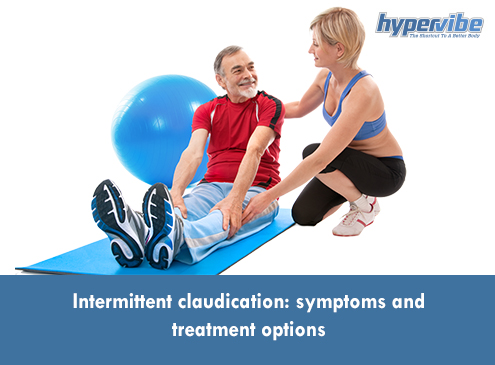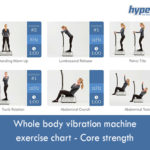
Intermittent claudication (IC) occurs due to poor blood circulation in the legs. It manifests through aching, burning pain and a sensation of heaviness and tiredness, as well as through muscle cramps that come and go. Usually the manifestations occur when you walk and decrease in intensity with rest.
IC is a symptom of peripheral arterial disease, and is caused by the narrowing of the arteries that supply blood to the legs. When the circulation of blood gets altered, the supply of oxygen becomes limited as well and this means the muscles no longer receive the needed amount of oxygen and nutrients to function properly.
The consequence is a tight, squeezing and aching pain in the feet, calves, thighs or buttocks, coupled with muscle spasms or cramps and with a feeling of weakness in the legs. These symptoms are experienced more intensely when walking uphill or downhill, climbing stairs or running. For people with severe arterial blockage and intermittent claudication, walking for long distances, jogging or running can be a great challenge, as the intensity of the symptoms usually limits the distance one can walk without experiencing severe pain.
IC also limits the walking or running speed, the average patient being able to walk between 90 and 180 meters before starting to accuse pain. In some cases, the narrowing of the arteries and the symptoms are only temporary – for example in case of a vasospasm, but people with atherosclerosis are likely to suffer from permanent artery narrowing and thus permanent IC symptoms.
Although it can also affect the arms, intermittent claudication generally affects the arteries in legs, and is a serious but treatable circulation problem. Affecting men more often than women, it is more present in people over 60-70 years. The symptoms caused by IC can be similar to those triggered by stress fractures, arthritis, spinal stenosis, peripheral neuropathy, blood clots or muscle tissue swelling.
Walking and exercising can help prevent and treat intermittent claudication, as they enhance the circulation of blood. If the pain is too intense, you can start with 10-15 minutes of walking per day and stop as often as needed. Walking helps improve the functioning of your circulatory system and stimulates muscle contractions in the legs, so blood is pushed through the vessels more efficiently.
Make sure to avoid tight shoes or pants, and quit smoking if you have this habit, as it can severely impair your blood circulation. These lifestyle changes are usually the first steps in treating IC, but if your symptoms don’t improve after adopting a more active and healthier lifestyle, your doctor may recommend medications or angioplasty.
You may be advised to take aspirin or other medications that help prevent blood clots and improve blood flow. If you suffer from atherosclerosis, your doctor may also recommend drugs for lowering your cholesterol levels or for controlling your blood pressure.
If these noninvasive methods don’t work, your doctor may recommend the surgical correction of the narrowing in the affected blood vessels. This can be done through angioplasty, a procedure that opens the arteries using a narrow tube that travels through the vessels and has an inflatable balloon at its end. When this tube reaches the desired position in the blood vessel, the balloon is inflated, helping to widen the artery and to improve circulation.
In more severe cases where this solution doesn’t work, the doctor may recommend vascular surgery through which a healthy blood vessel is taken from another part of your body and transferred in the affected area, replacing the narrowed artery. This way blood can flow around the narrowed vessel.
Have something to add to this article? Comment below or join our Facebook community and share your thoughts with us.

Updated on: 08.09.2021 The lymphatic system is involved not only...

Stress can make you gain weight – we’ve heard this...

Various theories exist to answer this question. As you will...

Both rebounding and jumping on a trampoline are excellent ways...

Our series of whole body vibration machine exercise articles continues...